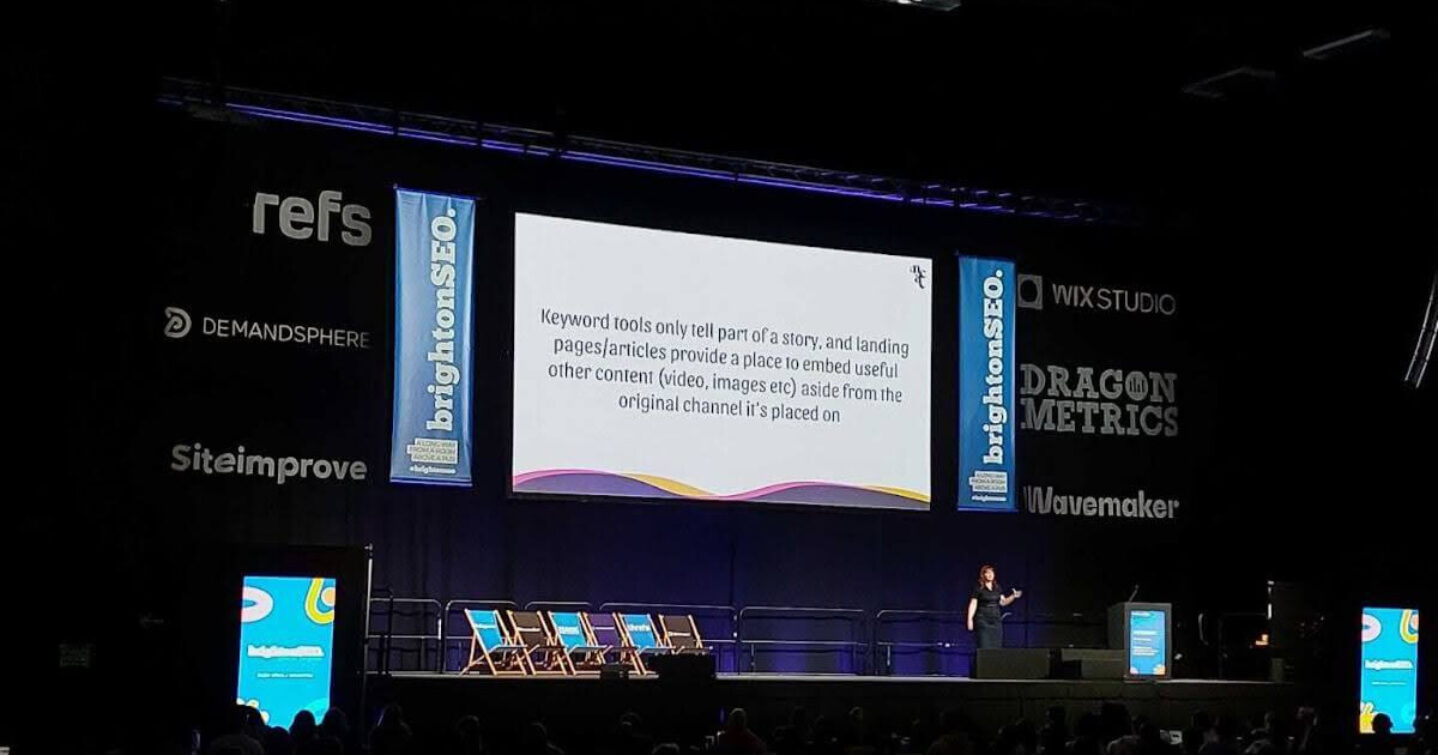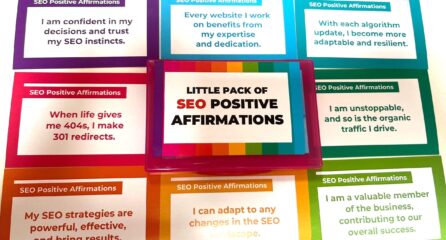The sky was grey, the wind was blustery and the rain dampened our clothes – but it certainly didn’t dampen Megan and Chloe’s spirits as they embarked on a trip to BrightonSEO.
Once again, the members of our SEO and Content pod flocked to the seaside ready for two days of talks and ideas – and free stuff, of course.
What we learned at BrightonSEO
Megan and Chloe attended this year’s April conference, where the talks covered topics such as content strategy, TikTok SEO, sustainability and Search Generative Experience. Here are four of their top takeaways.
Aligning your old content with new industry trends
From adding ‘Experience’ to the EAT metrics and the Helpful Content Update to multiple spam and product review updates, there’s been a clear shift from SEO-focused, keyword-heavy content to websites that focus on quality and the user journey.
However, if you’ve been writing content since the pre-Panda days, you’re working on a site that doesn’t quite align with Google’s guidelines or you’ve just written a lot of blogs over the years, there’s a chance you could be suffering from content decay. Take a look at your traffic and rankings – if you’re producing content but still not attracting new users, there’s a chance that your old content is holding you back.
In her talk Reduce, Reuse, Recycle Your Way to Content Success, Natalie Arney reinforced the importance of content audits, and the metrics you should include to provide a clear picture of your site performance. We’re already huge fans of content audits here at Loom and it was great to hear what Natalie’s own audits look like. This includes looking past metrics like traffic, engagement and rankings and including search intent and EEAT signals.
But then you can take this one step further and think bigger than SEO – after all, not all traffic comes from organic search. Make include traffic from all channels, as well as social shares. An in-depth content audit helps paint a clear picture of your content strategy – what’s working, what isn’t, and what’s quickly becoming outdated. Prioritise optimising and updating older guides alongside creating new ones and you should see your traffic steadily increase.
“A content audit is a key part of any content strategy – without one, how do you know if what you’re writing is actually hitting home? Spend time reviewing existing content at the start of your strategy and refresh it often. This way, you can ensure your content aligns with Google’s guidelines and meets user expectations, all while making the most of the search opportunities hidden throughout your site.
Content audits will likely look different for everyone, and Natalie provided some great insights into what she considers when reviewing her content and minimising its decay.”
Chloe Price
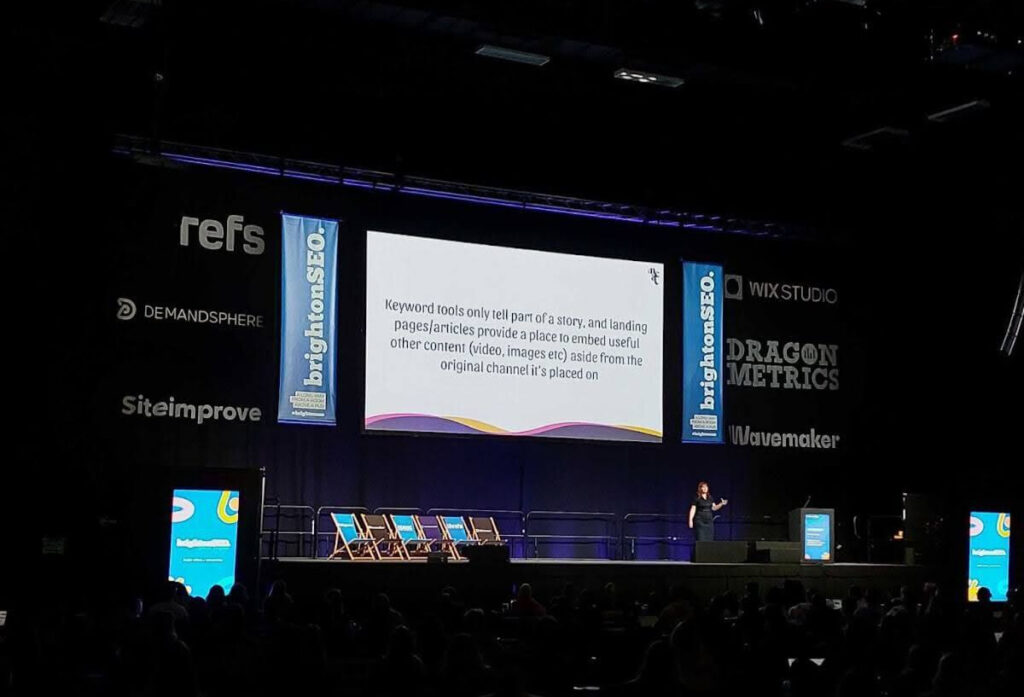
Diversify from your competitors
Google makes it very difficult for smaller businesses to compete with big brands such as Amazon Etsy and eBay, often favouring the latter in search engine results pages (SERPs). During her talk, How you can outperform big brands without thousands of SKUs, Victoria Roskow showed that she understood the struggle and gave these small-medium businesses hope. She stated that diversifying and taking Google’s guidelines with a pinch of salt is the key to beating these big competitors.
There were many ranking factors put to the test, but the main takeaway from her talk was that you should always perform a competitor analysis of the SERPs, and then do the one thing that your competitors aren’t.
For example, Dark Horse noticed that Core Web Vitals is often an area where these big names often fall down. Despite having a much lower domain authority and limited trust signals, they focused their efforts on improving page speed and soon reached position one.
As another example, Google suggests that product descriptions should be dictated by levels of buyer awareness. However, Victoria and the Dark Horse team put this to the test and found that, when well-optimised product descriptions are the only factor differentiating their client from the large brands, the results were staggering, and they managed to overtake them in organic search.
“Victoria’s talk gave helpful insights into how we can overcome these barriers when it comes to competition. These insights were backed up with real results and not just based on theory, which made it feel attainable for businesses.
It can often be demoralising when big brands are dominating the search landscape for our competitors but this talk from Victoria gives us hope. I’ve always known how important competitor analysis is but this really cements that and how Google gives out generalised guidelines that aren’t always applicable to every client. I’ve left Brighton very excited to put this theory to the test.”
Megan Ward
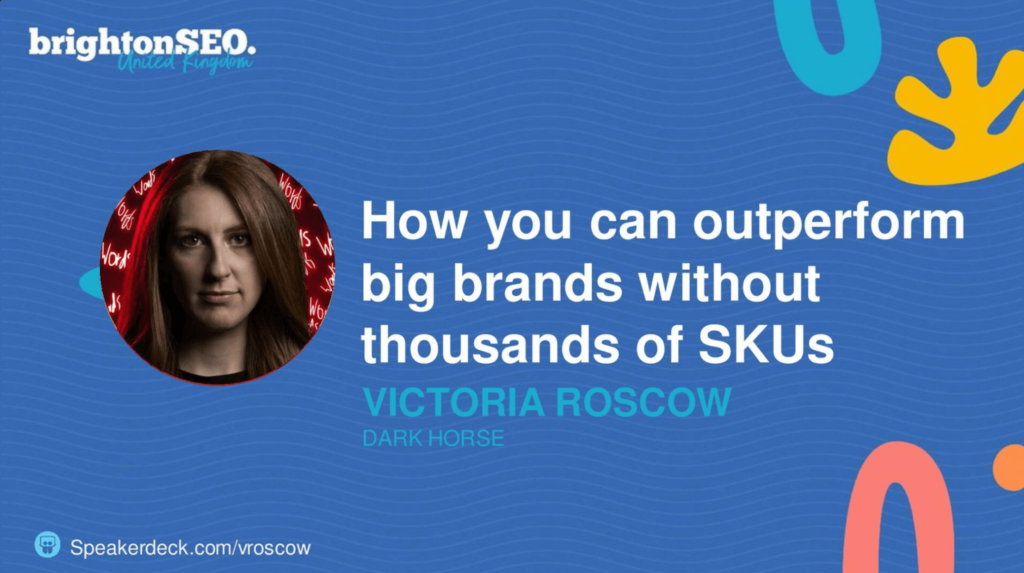
Be bold – talk about your competitors
As marketers, we’re always trying to beat the competition. And there’s a lot of competition out there – more so than ever. As part of the buying journey, users spend time searching for the best company offering the best product for them. In fact, they’ll look at three times more of your competitors than they used to – a stat cited by Araminta Robertson in her talk Yes, you can acquire customers by writing about your competitors.
Araminta spoke about the benefits of writing ‘versus’ content for your website, such as this this guide here. She says that your target audience for these types of blogs are a goldmine for conversions as they’re ready to buy – much sooner than those reading other informational guides that you (should) also have on your site. All they need to know is why they should buy from you rather than your competitors, and who better to explain that than you?
But of course, this type of content can understandably make some people nervous. If not done correctly, your guide can seem too sale-sy and put your users off. You need to treat these blogs in a certain way for them to be effective – and Araminta provided tips for those keen to give this strategy a go.
Once you have your keywords, map out the structure of your piece. This is where you need to be careful. Make sure you’re including more information about your product than your competitors’. Talk about the benefits of its features, but don’t go into the same level of detail when talking about the other products on the market.
Finally, don’t be scared to address the elephant in the room, as Araminta called it. Acknowledge that, sometimes, a competitor’s product might be better for some users. Nothing is a one-size-fits-all solution – and that’s OK. If a user wants to use your product for something that it isn’t best suited for, then they’re not your target audience anyway.
If you’re selling desk chairs, for example, someone looking for a cosy chair for their sitting room isn’t going to buy one of your products. Just highlight this in a sentence like ‘We know our product might not be right for everyone…’ and focus on what it is right for.
“Your audience is are going to look at your competitors, whether you tell them to or not, so why not capitalise on this part of the buying journey and use it to your advantage? Your-product-versus-theirs’s could be an interesting content strategy that, if done well, can make all the difference.”
Chloe Price
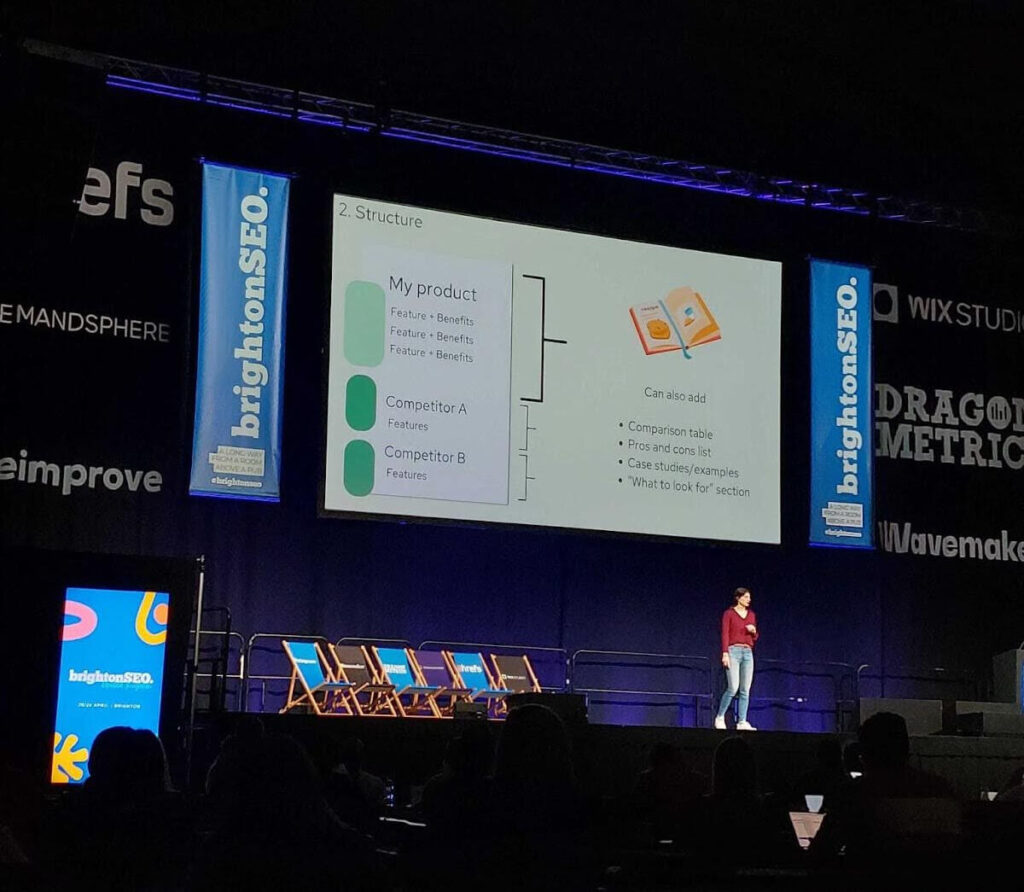
TW-BERT helps Google understand context intuitively in a similar way to humans
Keywords were the end-all for SEO, planning our strategies around rankings and continuously benchmarking key terms. This hasn’t changed, but the way we look at these keywords has. Now, in a user-first industry, the intent behind the keyword – the ‘why’ behind these queries – has far more importance than before.
Over the years, Google has become better at understanding the semantics behind keywords, and which pages to show as a result. And while this is still a work in progress at the moment from Google’s side, plenty of improvements have been made to improve the quality of search. The BERT update is one of them.
In his talk, TW-BERT: Good for users, good for SEOs, Dave Cousin talked about the difference between BERT and term weighting BERT, and how this will impact users and Google’s machine learning. He explained that TW-BERT helps the search engine understand context intuitively in the same way humans do. This is because it recognises that some word pieces are more important than others – which is particularly noticeable with longer keywords. However, Google’s use of this framework has still not been confirmed.
It also highlights the importance of optimising for intent in search, rather than relying on keywords at face value. N-grams (sequences of words) may be the future and where search is heading, so is certainly something to consider.
It will lead to less competition from irrelevant results, as Google will understand the context and relationship between the word pieces. This means you’ll only see relevant results in search results, based on how the keyword is weighted. This produces a better search experience for users and improves the world of SEO, as the SERP will increase in accuracy and relevancy.
What does this mean in practice? Don’t keyword stuff your content or only rely on tools for your research. Instead, manually study the search results of your main keywords to check that they align with your audience’s understanding of key terms. Always think of the user and choose phrases that are semantically correct, are relevant to your business and are used naturally throughout your content.
“It’s very interesting to understand how machines learn through natural language processing frameworks such as BERT. Google has been criticised in recent years for showing less relevant results so the introduction of TW-Bert is something that will improve search, not just for the user but also those who work in SEO.”
Megan Ward
Want insights from the latest conference? Read our roundup of BrightonSEO October 2024.

SEO and Content strategies from Loom Digital
Chloe and Megan have returned from their trip to the seaside full of ideas for our clients. If you think your SEO strategy isn’t working, your Content is hard to manage or you’re intrigued by one of the talks we’ve mentioned above, speak to our team today.
